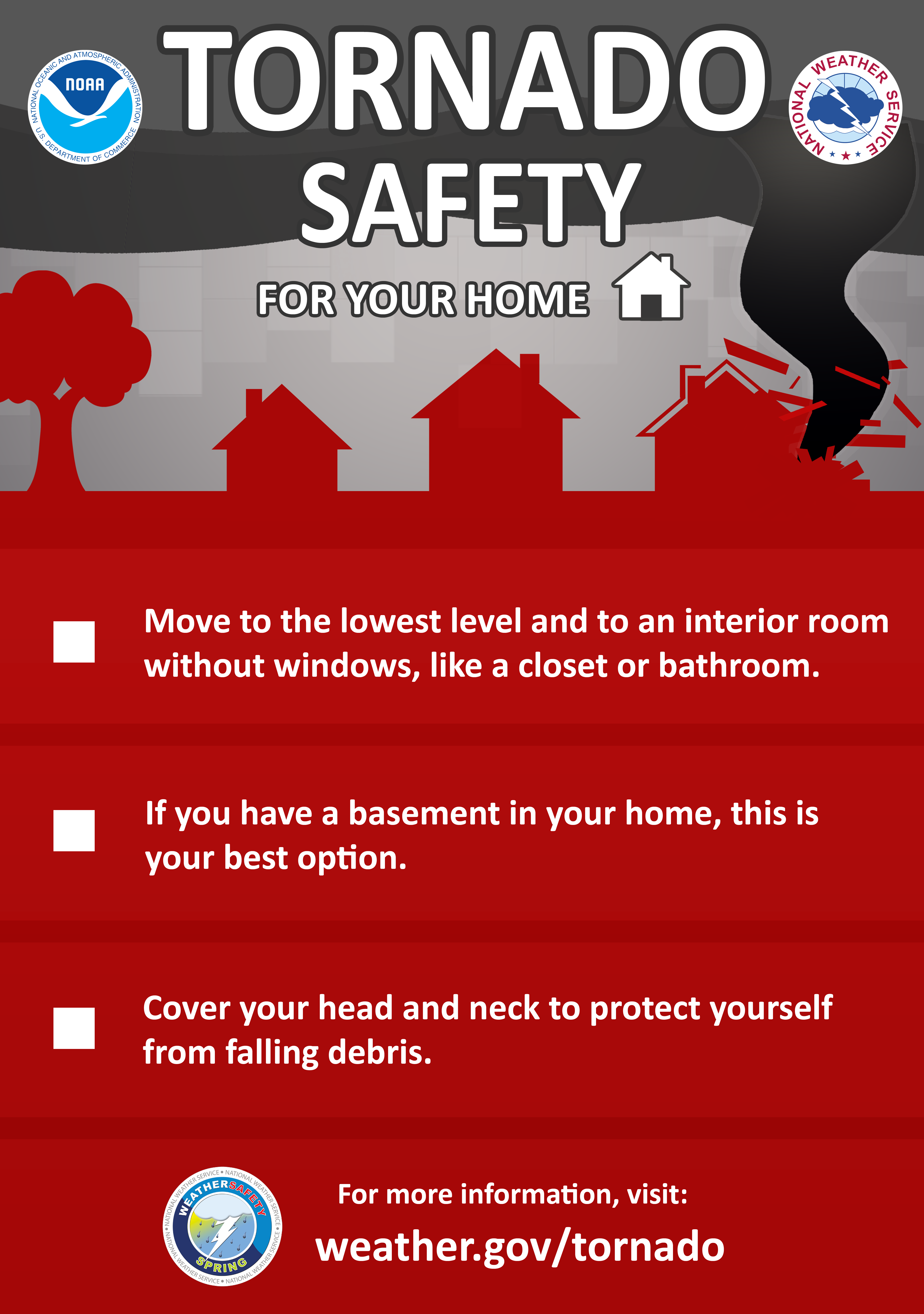Flood Warning: Stay Safe With NWS Safety Tips

Table of Contents
A Flood Warning signifies a serious threat. The National Weather Service (NWS), the nation's leading source for weather information, issues these warnings to alert communities about impending or ongoing flooding. This article provides crucial safety tips directly from the NWS to help you stay safe during a flood warning.
Understanding Flood Warnings and Watches
It's vital to understand the difference between a Flood Warning and a Flood Watch. Knowing the distinction can save lives.
- Flood Watch: A Flood Watch means conditions are favorable for flooding. This isn't an immediate emergency, but it's a signal to prepare. Monitor weather reports closely and be ready to act quickly if conditions worsen.
- Flood Warning: A Flood Warning indicates that flooding is happening or is imminent in your area. This is a serious alert requiring immediate action. You should take steps to protect yourself and your property.
- Flash Flood Warning: This is the most urgent alert. A flash flood is a rapid, dangerous flood, often occurring with little warning. You must seek higher ground immediately.
These warnings cover various types of flooding:
- Flash floods: Sudden, rapid flooding, often caused by intense rainfall.
- River floods: Gradual rises in river levels, often lasting for days or even weeks.
- Coastal floods: Flooding along coastlines due to high tides, storm surge, or tsunamis.
Preparing for a Flood: Before the Warning
Proactive preparation is key to surviving a flood. Before a flood warning is even issued, take these steps:
- Develop a family communication plan: Establish a meeting point and contact information for everyone in your family, in case you are separated during a flood.
- Identify potential flood risks: Know if your home is located in a floodplain or low-lying area, increasing your vulnerability to flooding.
- Create an emergency kit: Assemble a kit containing essential supplies like water, non-perishable food, medications, important documents (in waterproof containers), flashlights, and a first-aid kit.
Remember to:
- Sign up for weather alerts through the NWS website or app for timely notifications.
- Locate the nearest evacuation route and familiarize yourself with it.
- Understand your insurance coverage for flood damage. Many homeowner's insurance policies don't automatically cover flood damage; you may need a separate flood insurance policy.
Responding to a Flood Warning: During the Event
When a Flood Warning is issued, immediate action is crucial. Your primary concern should be your safety.
- Evacuate immediately if instructed: Don't delay; obey evacuation orders from local authorities.
- Evacuate safely: Avoid flooded roads—water can be deeper and faster-moving than it appears. Use designated evacuation routes.
- If evacuation isn't possible: Move to higher ground within your home, turn off utilities (gas, electricity), and monitor the situation.
Crucially:
- Never drive through flooded areas. The saying "Turn around, don't drown" is paramount. Even a small amount of water can sweep a vehicle away.
- Stay away from downed power lines. These are extremely dangerous.
- Avoid contact with floodwater. It may be contaminated with sewage, chemicals, or other hazardous materials.
Recovering After a Flood: Post-Flood Safety
Returning to a flooded area too soon can be extremely dangerous.
- Wait for official clearance: Local authorities will announce when it's safe to return.
- Assess damage safely: Wear protective gear (boots, gloves, mask) when inspecting your property for damage. Be aware of potential hazards like broken glass, downed trees, and contaminated water.
- Contact insurance and seek assistance: File a claim with your insurance company and contact relief organizations for assistance.
Remember to:
- Thoroughly clean and disinfect everything that came into contact with floodwater.
- Discard any food or medications exposed to floodwater.
- Be aware of the potential for mold growth and take appropriate steps for remediation.
Utilizing NWS Resources for Flood Information
Stay informed using the NWS's resources:
- Website: weather.gov
- Mobile App: Download the NWS weather app for your smartphone.
- Social Media: Follow the NWS on social media for updates and warnings.
Use the NWS website to find local flood forecasts and warnings specific to your area. Staying informed is crucial throughout the entire flood event.
Conclusion: Stay Safe During Flood Warnings
Staying safe during a flood warning requires a multi-faceted approach. Understanding the different types of warnings, preparing in advance, responding appropriately during a flood, and taking necessary precautions after the flood are all essential steps. By following the NWS guidelines and prioritizing safety, you can significantly reduce your risk and protect yourself and your loved ones.
Visit the NWS website for more information on flood safety and to stay informed about flood warnings in your area. Be prepared for flood warnings; protect yourself from flood warnings and stay safe with NWS safety tips.

Featured Posts
-
 Leeds Eye Southamptons Kyle Walker Peters Transfer News
May 25, 2025
Leeds Eye Southamptons Kyle Walker Peters Transfer News
May 25, 2025 -
 Alexandra De Hannover Y Carolina De Monaco Iconos De Estilo En El Baile De La Rosa 2025
May 25, 2025
Alexandra De Hannover Y Carolina De Monaco Iconos De Estilo En El Baile De La Rosa 2025
May 25, 2025 -
 The Rtx 5060 A Case Study In Graphics Card Review Transparency
May 25, 2025
The Rtx 5060 A Case Study In Graphics Card Review Transparency
May 25, 2025 -
 George L Russell Jr Maryland Legal Giant And Progressive Icon Passes Away
May 25, 2025
George L Russell Jr Maryland Legal Giant And Progressive Icon Passes Away
May 25, 2025 -
 Vozrast Geroev Filma O Bednom Gusare Zamolvite Slovo Podrobniy Analiz
May 25, 2025
Vozrast Geroev Filma O Bednom Gusare Zamolvite Slovo Podrobniy Analiz
May 25, 2025
Latest Posts
-
 55 Richna Naomi Kempbell Naykraschi Obrazi Ta Foto Z Podiumiv
May 25, 2025
55 Richna Naomi Kempbell Naykraschi Obrazi Ta Foto Z Podiumiv
May 25, 2025 -
 Naomi Kempbell U 55 Stil Ta Kar Yera Supermodeli
May 25, 2025
Naomi Kempbell U 55 Stil Ta Kar Yera Supermodeli
May 25, 2025 -
 Naomi Kempbell 55 Rokiv Na Podiumakh Foto Ta Obrazi Legendi
May 25, 2025
Naomi Kempbell 55 Rokiv Na Podiumakh Foto Ta Obrazi Legendi
May 25, 2025 -
 Penzionerska Idila Milioni I Vile Zivot Iz Snova
May 25, 2025
Penzionerska Idila Milioni I Vile Zivot Iz Snova
May 25, 2025 -
 Nova Fotosesiya Naomi Kempbell Provokatsiyni Ta Vidverti Foto
May 25, 2025
Nova Fotosesiya Naomi Kempbell Provokatsiyni Ta Vidverti Foto
May 25, 2025
